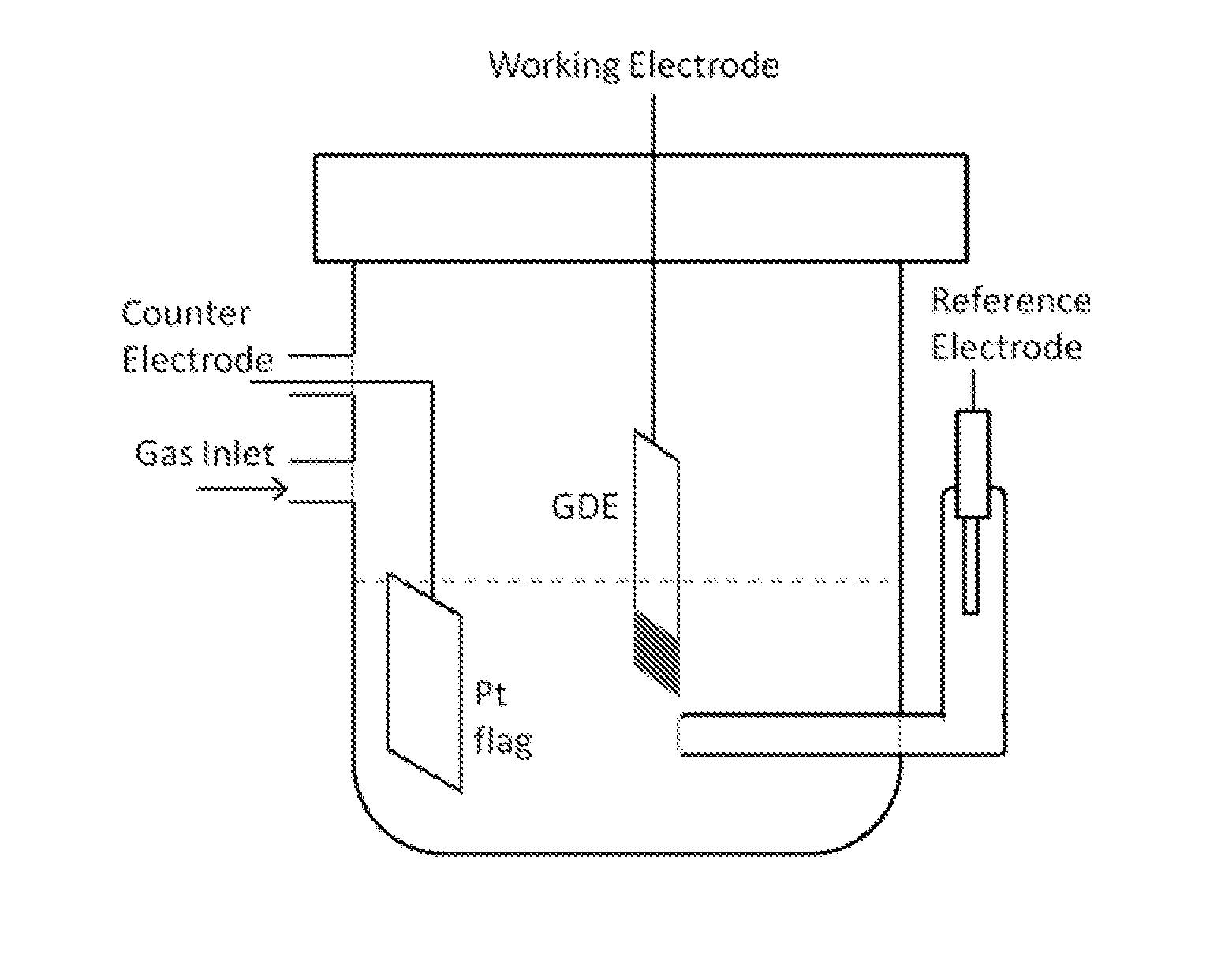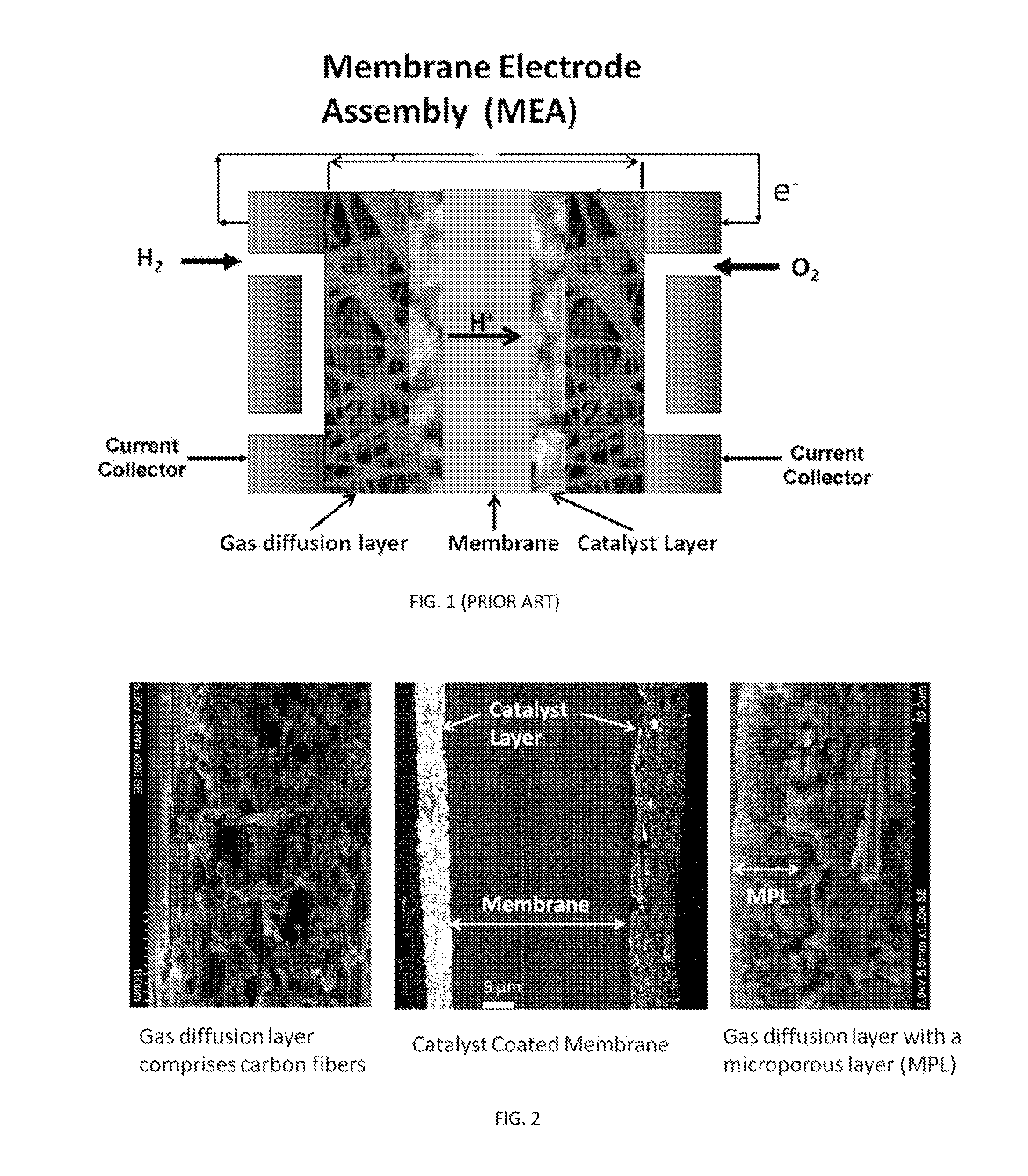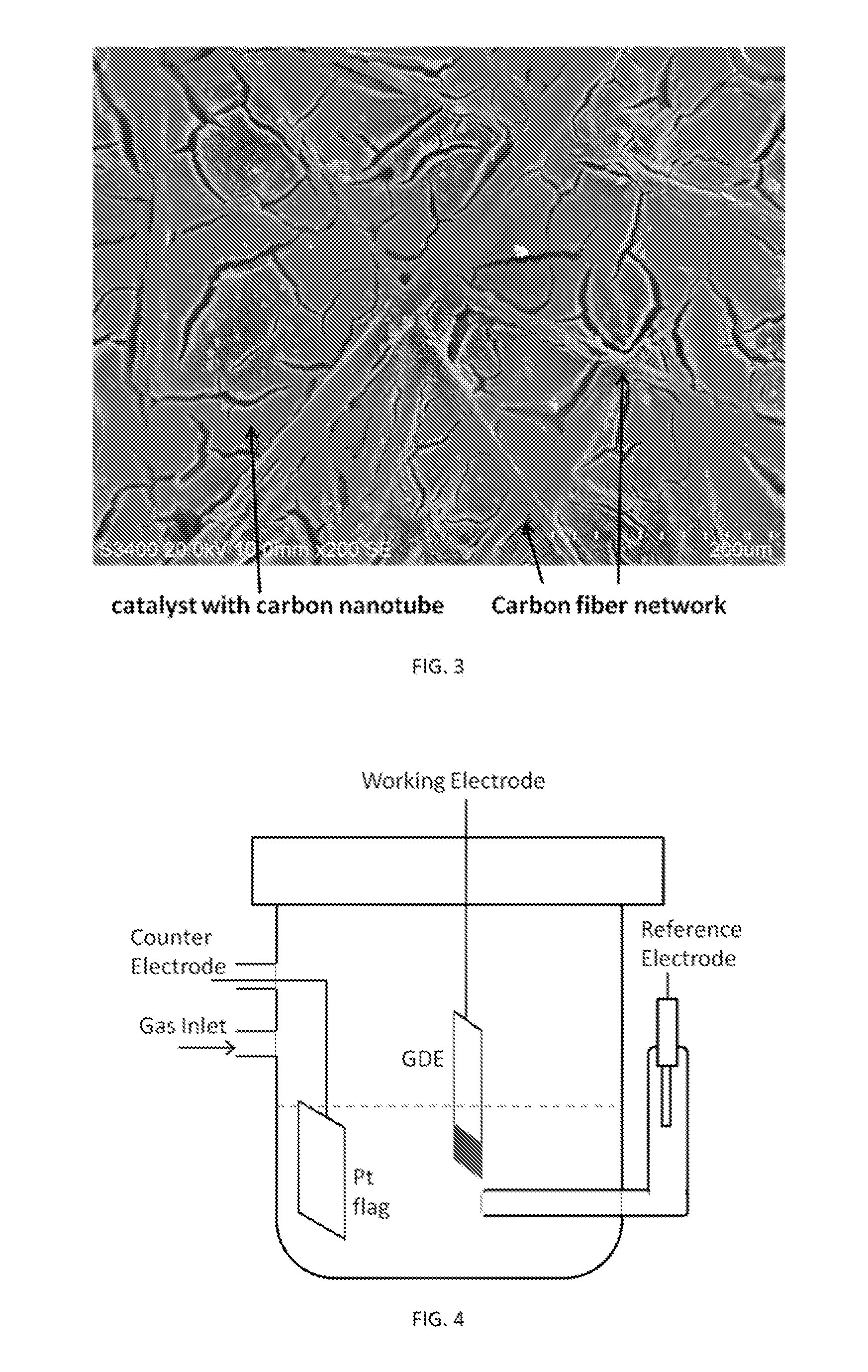Gas Diffusion Electrodes and Methods for Fabricating and Testing Same
- Summary
- Abstract
- Description
- Claims
- Application Information
AI Technical Summary
Benefits of technology
Problems solved by technology
Method used
Image
Examples
example 1
[0083]Ru@Pt core / shell nanoparticles at various Pt to Ru ratios (i.e., 0.1 to 1.3) were prepared on carbon support following a procedure described in a copending U.S. patent application Ser. No. 13 / 860,316, filed Apr. 10, 2013, which is incorporated by reference in its entirety. Catalyst inks were prepared by dispersing the carbon-supported metal catalysts in a solution of deionized water (18.2 MΩ, Millipore UV Plus), isopropyl alcohol (Mallinck-Baker), ethanol (200 proof, ACS / USP Grade, Pharmco Aaper) and 10 wt % Nafion® (perfluorinated resin, equivalent weight 1000, Aldrich). GDL strips, typically sized 1×4 or 1.4×3.7 cm, were weighed before painting the catalyst ink over an area of 0.2 cm2 to 1 cm2 at one end of the GDL strips. After the solvents had completely evaporated in air at room temperature, the increase in weight was used to calculate metal loading from the weight percentage of metals on the carbon support and the Nafion's dry weight. The best performing HER-HOR GDEs wer...
example 2
[0084]The Ru@Pt / C catalysts from Example 1 or commercially available Pt / C catalysts (e.g., NanoComposix, Inc.; San Diego, Calif.) or Pt / C catalysts prepared by methods well known in the art (e.g., microwave-assisted polyol process described in Liu Z. et al. Journal of Power Sources Volume 139, Issues 1-2, 4 Jan. 2005, Pages 73-78; incorporated by reference in its entirety) were dispersed in a vial of deionized water (1 mg catalyst mL−1) by placing it in an ultrasonication bath with ice for 5˜10 min (Branson 1510). An aliquot of the suspension (10 to 20 μL) was pipetted onto a polished glassy carbon rotating disk electrode (5 mm diameter, Pine Research Instrumentation). After drying in air at room temperature, the as-prepared thin-film rotating disk electrode was mounted onto a rotator as the working electrode in electrochemical measurements.
example 3
[0085]A Volta PGZ402 potentiostat (VoltaLab, Radiometer Analytical) was employed for measurements using conventional three-electrode electrochemical cells. Electrolyte solutions of 1 M concentration were prepared with 70% perchloric acid and lithium perchlorate (optima, Fisher Scientific). The GDE strip was held vertically with the catalyst-coated end immersed in the solution and positioned such that the catalyst-coated side faced a Pt flag counter electrode. We employed a reference electrode (Ag / AgCl, 3 M NaCl) with a double-junction chamber (Cypress Systems). All potentials are quoted with respect to the reversible hydrogen electrode (RHE).
[0086]Polarization curves for the HER-HOR were obtained in hydrogen-saturated electrolyte solutions by averaging the two nearly identical cathodic and anodic potential sweeps measured at 20 mV s−1. They represent steady-state polarization curves, as verified by time-dependent measurements after a potential step. Typically, we determined the pola...
PUM
| Property | Measurement | Unit |
|---|---|---|
| Temperature | aaaaa | aaaaa |
| Length | aaaaa | aaaaa |
| Length | aaaaa | aaaaa |
Abstract
Description
Claims
Application Information
 Login to View More
Login to View More - R&D
- Intellectual Property
- Life Sciences
- Materials
- Tech Scout
- Unparalleled Data Quality
- Higher Quality Content
- 60% Fewer Hallucinations
Browse by: Latest US Patents, China's latest patents, Technical Efficacy Thesaurus, Application Domain, Technology Topic, Popular Technical Reports.
© 2025 PatSnap. All rights reserved.Legal|Privacy policy|Modern Slavery Act Transparency Statement|Sitemap|About US| Contact US: help@patsnap.com



